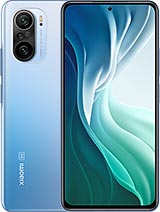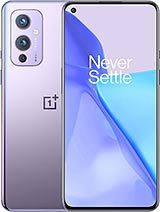ZTE Axon 30 5G review

Competition
The Axon 30 5G bumps up the price class compared to last year's Axon 20 5G and has some of the premium features to justify the jump. Sadly, not all of them. The Snapdragon 870 SoC is a nice touch as well as the 120Hz OLED panel, but there are two key aspects in which ZTE's contender has a hard time keeping up with its competition. One of them is the camera and the other one is battery life and charging.

For the exact same price of about €500, you can get the Xiaomi Mi 11i (or 11X in some markets). It fares better in photography (not just because of the bigger 108MP sensor), it runs longer on a single charge and has a brighter display with HDR10+ support. The IP53 ingress protection and the more premium build are a nice bonus too. And maybe for the sake of thoroughness, we should also mention the more potent Snapdragon 888 chipset, but the truth is, it wouldn't make a big difference in day-to-day use.



Realme GT 5G • Xiaomi Mi 11i • OnePlus 9
If you are willing to go half an inch down in display size, the Realme GT 5G probably has the best bang for the buck on this list. It's marginally better when it comes to photo and video quality, but it wins the race with longer battery life, faster charging, great build, faster chipset, and has a set of stereo speakers too. The whole package costs about €450, which is a bit less than what the Axon 30 5G is asking.
Going up the price ladder and you'd probably stumble upon the OnePlus 9. If you are a fan of OxygenOS, it's probably a clear-cut decision for you. Otherwise, the OnePlus 9 might win you over with a brighter display, faster charging, considerably better photography skills, great-sounding stereo speakers, wireless charging and snappier SoC. You still need to consider the significant price jump, though, as the OnePlus 9 goes for around €600 right now.
Verdict
As we said, the Axon 30 5G has a few intriguing features on its specs sheet even if you look past the under-display selfie camera. It's got a high-performance Snapdragon 870 SoC, as well as a very good 120Hz OLED panel.
However, there are a couple key aspects in which ZTE Axon 30 5G is not very competitive.
Even with its unique display properties, it just can't make up for the absence of auto-brightness boost, the smaller than usual battery and the typical mid-range camera setup. The latter just doesn't cut it in the €500 class.

Even if you are not a fan of selfies and you are happy that there's no selfie camera obstructing your content, you'd probably still use it every once in a while, maybe for video calls. And you'd wish you could rely on that camera, but you really can't. All of Axon 30's competitors are doing at least a decent job at that, while ZTE's solution is hardly competitive in this regard. The improvement over the last generation just isn't enough.
Looking ahead, the Axon 30 5G may go down the price ladder, and then you can probably consider buying one. But for now, we suggest you skip it unless you are here solely for the novelty of the under-display camera.
Pros
- Lightweight design.
- Large, cutout-less, 10-bit, 120Hz OLED display.
- Simple but not feature-less MyOS.
- The phone charges over universal USB Power Delivery protocol, has microSD card slot.
Cons
- Sub-optimal camera performance across the board.
- The competition offers a more premium build.
- Below average battery life and charging speed.
- The display doesn't have auto brightness boost.
Reader comments
- mcirsta
- 16 Feb 2023
- mW4
I just got it for 240E. For this price it's a great phone. I almost never use the selfie camera and battery life is also not that big of an issue for me so all good.
- Anonymous
- 08 Apr 2022
- xkS
the main camera has 64MP 0.8um , so the digital zoom should be fine